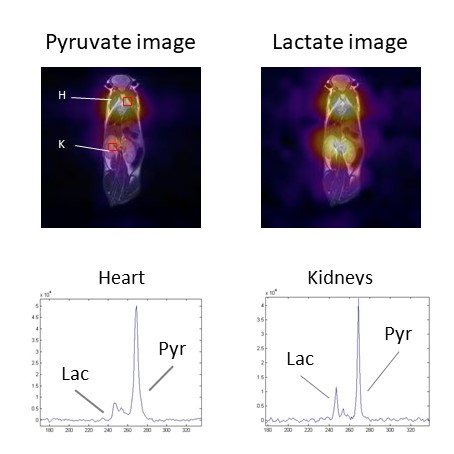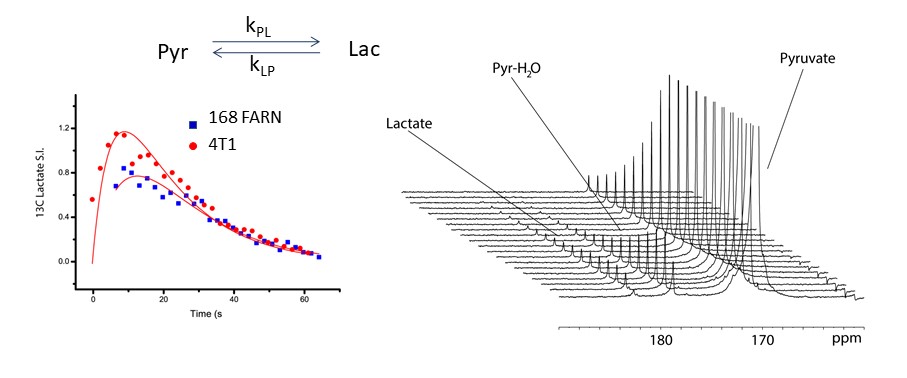Imaging Metabolism
Altered metabolism is a general feature of diseased tissues, not only cancer, but also other diseases such as genetic predisposition to heart failure. Hyperpolarized pyruvate, obtained through the affordable and easy to handle PHIP-SAH approach, has been applied to investigate these metabolic changes.

Hyperpolarized pyruvate, obtained by means of the PHIP-SAH approach, has been used to investigate metabolism in transgenic mice that are a model of heart failure [Cavallari et al. 2018]. This is the first in vivo application of PHIP-SAH hyperpolarized pyruvate and it demonstrate that this pathology can be detected, using HP-pyruvate, few weeks before than using a conventional method (i.e. echography). The so-called Warburg effect, i.e. an up-regulated conversion of pyruvate into lactate, even in the presence of oxygen, is a common feature of cancer tissues. HP-pyruvate, obtained using parahydrogen, has been used to investigate these metabolic changes in cancer cell lines characterized by different aggressiveness [Cavallari et al. 2019].
